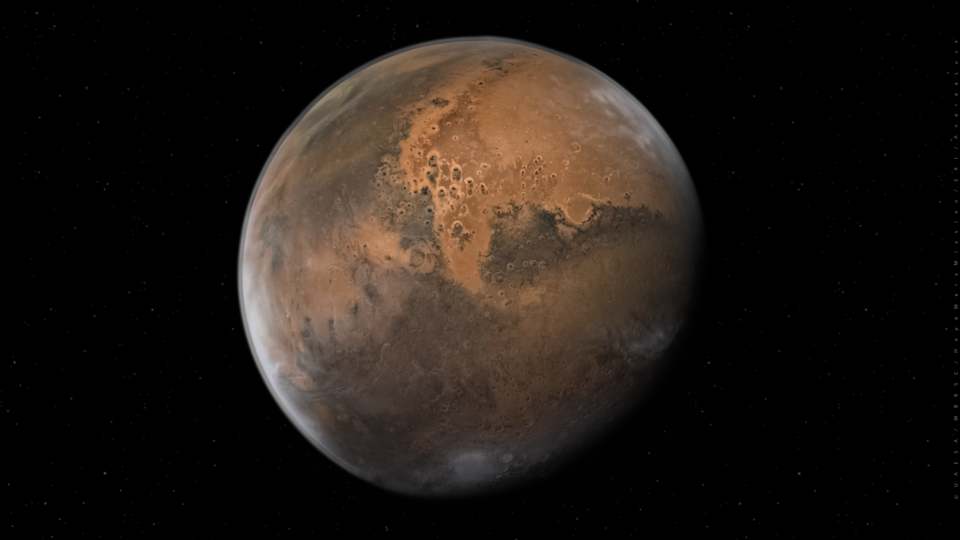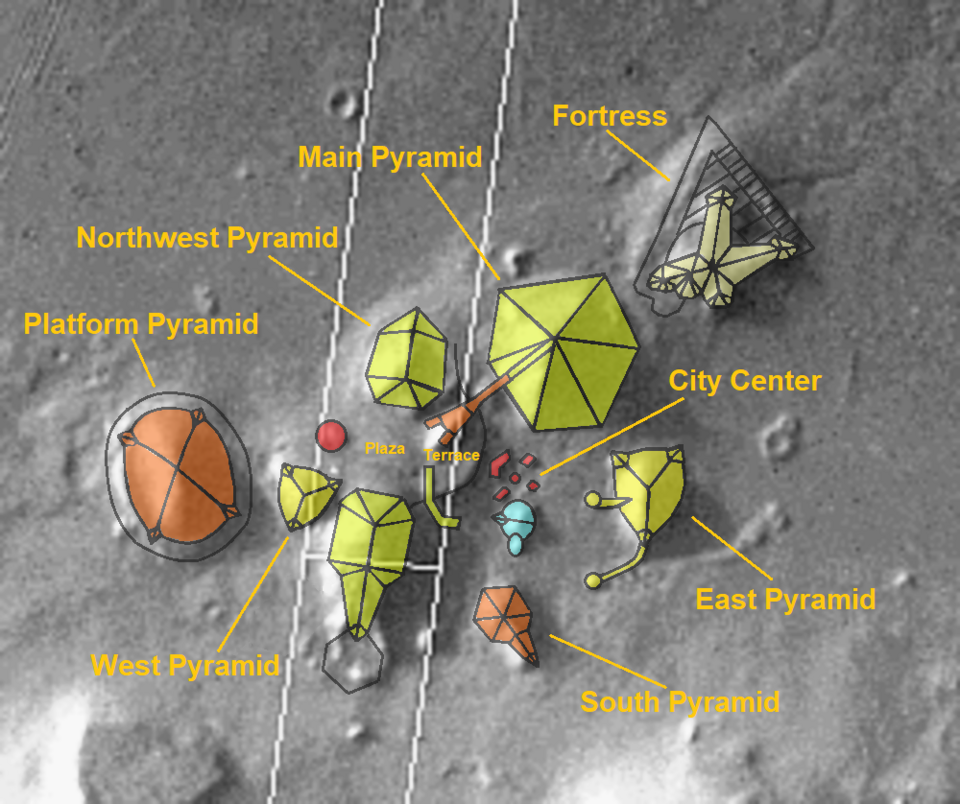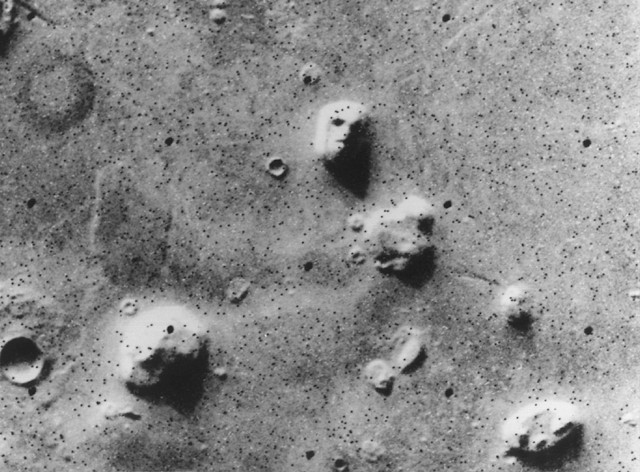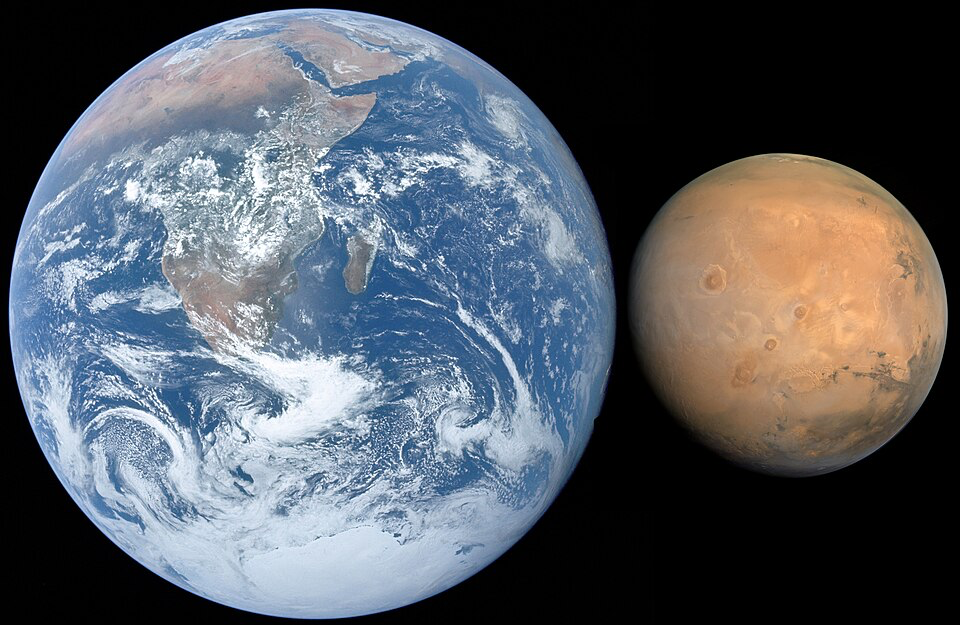The red planet hides secrets darker than its rusty landscape. Scientists have uncovered evidence suggesting an ancient, thriving Martian civilization met a violent end. The cause appears to be a massive nuclear attack. This bold theory gains support as researchers continue to find nuclear isotopes and possible ruins on our neighboring planet.
Shocking Nuclear Evidence Found on Mars
Dr. John Brandenburg, a plasma physicist who worked with NASA on the Clementine Mission, has discovered disturbing evidence on the Martian surface. “The concentration of 129Xenon in the Martian atmosphere, along with evidence of intense neutron flux over the northern regions of Mars, suggests a catastrophic nuclear event in the planet’s past,” Brandenburg explains in his research published in the Journal of Cosmology.

Brandenburg didn’t set out to find alien conflicts. Instead, he began with his routine atmospheric tests. He couldn’t ignore what the data revealed. A pattern of radioactive elements clusters in two specific regions of the northern hemisphere. These elements include uranium, thorium, and radioactive potassium. What’s fascinating is that the xenon isotope signature matches what we see in Earth’s nuclear testing sites. It shows distinct signs of fast neutron fission rather than controlled nuclear reactions.
Evidence of Life on Mars: The Cydonian Hypothesis
The highest concentrations of nuclear isotopes appear near two specific locations: Cydonia Mensa and Galaxias Chaos in Mars’ northern plains. These areas have intrigued researchers for years because of formations that some interpret as artificial structures from a Martian civilization.

“When we look at the isotopic evidence alongside the geographic locations of these anomalies, it creates a compelling case,” Brandenburg notes. “The explosions appear centered in the Northern plains in Mare Acidalium at approximately 50°N, 30°W, near Cydonia Mensa and in Utopia Planum at approximately 50°N 120°W near Galaxias Chaos.”
Scientists remain divided on whether these formations result from natural geology or indicate an ancient civilization. Nevertheless, Brandenburg’s work has revitalized interest in the Cydonian Hypothesis. This hypothesis proposes Mars once hosted intelligent life. High-resolution photos of these areas reveal what some interpret as weathered ruins. These photos show evidence of “collapsed brickwork” and architectural features that appear purposeful and symmetrical rather than random.
The Scale of Destruction: 10 Billion Megatons
Brandenburg’s calculations indicate these Martian events released explosive power of approximately 10^10 megatons. This is similar to the asteroid impact that killed Earth’s dinosaurs. Furthermore, the lack of impact craters suggests the explosions occurred above ground. This is consistent with nuclear airbursts.
“By modeling the 129Xenon component in the Mars atmosphere as due to fast neutron fission and the 80Kr as due to delayed neutrons from a planet-wide debris layer, we arrive at approximately 10^25 joules of energy,” Brandenburg explains. “This would be large enough to create a global catastrophe and fundamentally alter Mars’ climate.” While we don’t know exactly when these events occurred, evidence points to millions of years ago.
While we don’t know exactly when these events occurred, evidence points to millions of years ago. This coincides with Mars’ transformation from a warmer, wetter world to the frozen desert we see today. The evidence suggests a Martian civilization may have been destroyed by these nuclear events.
Read More: Former CIA Operative Claims to Have Proof of Life on Mars
Extinct Martian Civilization: Who Were The Inhabitants?
“The evidence suggests that Mars was the locale of a planetary nuclear massacre,” Brandenburg writes. “The civilization appears to have been primitive and indigenous to Mars.” If Brandenburg’s theory is correct, who were these Martian inhabitants? His research suggests an independently evolved civilization indigenous to the red planet. The structures appear primitive compared to our modern technology. They however display signs of mathematical precision and engineering skill.

The controversial face-like formations at Cydonia Mensa and Galaxias Chaos have been studied with increasingly sophisticated cameras. Many scientists dismiss these as pareidolia. This term refers to natural formations that merely resemble faces. Brandenburg, however, maintains that newer images confirm artificial details. “The new images show evidence of nostrils and helmet ornaments being clearly seen with details at approximately 1/10 scale of the face,” his research states. “High-resolution imagery shows symmetric brickwork around the nose region.”
Implications for Earth and the Fermi Paradox
Brandenburg’s theory offers an eye-opener answer to Fermi’s Paradox. This paradox questions why we haven’t contacted other civilizations despite the high probability they exist. Perhaps advanced civilizations routinely perish before reaching interstellar travel. This could happen either through self-destruction or external threats.
“The answer to Fermi’s Paradox may thus lie on Mars,” Brandenburg suggests. “It is recommended that a mission for human occupation of Mars be immediately initiated to maximize knowledge of what transpired there.” These findings raise huge questions about Earth’s future. If an advanced Martian civilization once thrived in our solar system only to be annihilated, could humanity face a similar fate? The threats might come from space or our nuclear arsenals.

This makes Mars exploration take on new urgency. The nuclear isotope evidence remains difficult to dismiss, regardless of whether we accept the archaeological interpretations of Martian surface features.
Scientific Community Response
Most mainstream scientists maintain skepticism toward Brandenburg’s conclusions. They suggest alternative explanations for the isotopic anomalies. They particularly point to natural processes that might concentrate these elements without requiring nuclear explosions. However, no one disputes the presence of these isotopes. Only their origin remains contentious. The elevated levels of 129Xenon and evidence of neutron bombardment demand an explanation. This is true whether through natural or artificial means.
As NASA and other space agencies deploy increasingly sophisticated instruments to Mars, future missions may specifically target these regions. These missions aim to gather more definitive data about their composition and structure.
For now, Mars guards its secrets. The Martian civilization Brandenburg describes has potentially suffered the greatest tragedy in our solar system’s history. Whether his theory ultimately proves correct or not, the red planet offers perhaps the most important lesson of all. It provides a stark reminder that civilizations, however advanced, remain fragile against sufficiently powerful forces.
Read More: NASA’s Mars Rover Uncovers Mysterious Spheres On The Planet’s Surface, Leaving Experts Baffled

